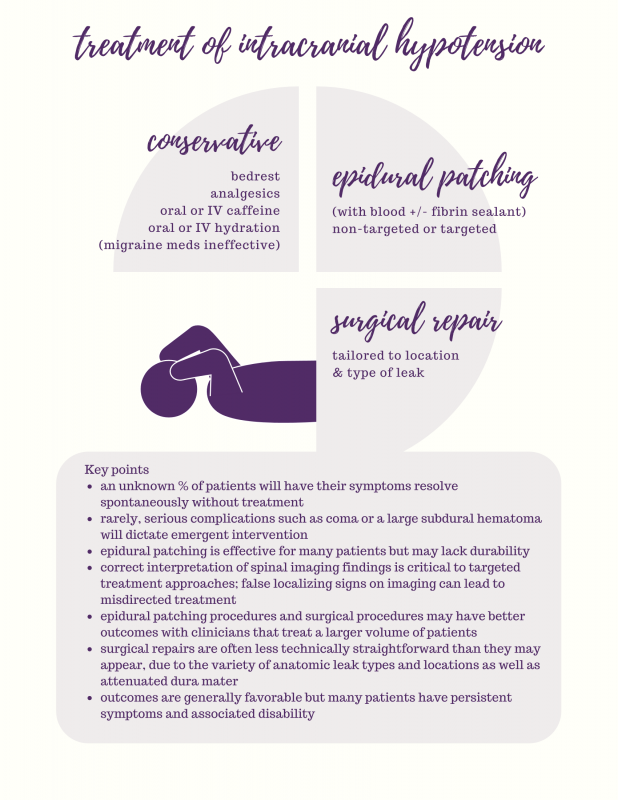

The poor outcome, longer hospital stay, longer immobilization, infection, and revision surgery are possible complications of poorly managed durotomy during the initial procedure, also minor postoperative complications, including headache, nausea, vomiting, neck pain, back pain, dizziness, diplopia, photophobia, tinnitus, and blurred vision can occur. in some cases with anterior or far lateral durotomy primary watertight repair is not guaranteed, so repair with standalone grafts and tissue sealant was also described. Both synthetic grafts and grafts from the patient as lumbar fascia, fat, or muscle grafts were described.

Many techniques were described for repair of durotomy including primary sutures with or without added augmentation like grafts or tissue sealants. revision surgery, procedures with fixation and fusion, and the presence of pre-existing conditions such as ossified posterior longitudinal ligament, diabetes, osteoporosis, arthritis and ossification of the ligament flavum. Studies have also suggested that ID is associated with the age of the patient, the type of procedure performed, primary vs. Previous studies suggested that ID can occur irrespective of a surgeon's abilities or experience. The incidence of incidental durotomy (ID) during the different lumbar spinal procedures was estimated between 1.6%-17.4%. Durotomies that were immediately recognized and treated did not lead to any significant consequences. Conclusionsĭural closure technique after ID does not seem to influence revision surgery rates due to cerebrospinal fluid (CSF) leakage and its complications. Among our study cases 2 patients from group A and 4 patients from group B needed revision surgery due to CSF leak which failed to stop with conservative management and percutaneous blood patch. Better outcome was achieved in 32 patients of group A and 30 patients of group B. The dural tear was < 2 cm in 41.7% of group A and 83.3% of group B. ResultsĮleven cases of group A and nine cases of group B had previous spine surgery. Patients were evaluated for risk factors for durotomy, post-operative clinical outcome, and need for revision surgery. Our study described two groups with posterior and postero-lateral ID that occurred during lumbar spine surgery: group A with 34 cases with a mean age of 49.85 years repaired by primary water tight closure using prolene or silk sutures, and group B with 34 cases with a mean age of 47.18 years treated with augmented primary repair (sutures augmented with a graft from lumbar fascia and tissue sealant "Fibrin glue"). Many surgical techniques were described in literature for repair of durotomy, however it is a matter of debate if one technique is a gold standard method of repair. Incidental durotomy (ID) during lumbar spine surgery is a frequent complication of lumbar spine surgical procedures.


 0 kommentar(er)
0 kommentar(er)
